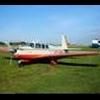heating for the back seats in an M20F
-
Members Online
- jamesyql
- BlueSky247
- Planter
- crustymuffin
- ThespinDotor
- Will.iam
- Guy123
- IvanP
- AIREMATT
- Super Phreek
- DCarlton
- DonMuncy
- Shadrach
- hubcap
- Dick Denenny
- Niko182.
- Lee G.
- EricJ
- ArtVandelay
- amillet
- jcavazos
- Robert Hicks
- bcg
- Joshua Blackh4t
- PT20J
- Hank
- Mooney-Shiner
- flewmanchu
- Marc_B
- atpdave
- Thedude
- Hoeschen
- patrickf


Recommended Posts
Join the conversation
You can post now and register later. If you have an account, sign in now to post with your account.